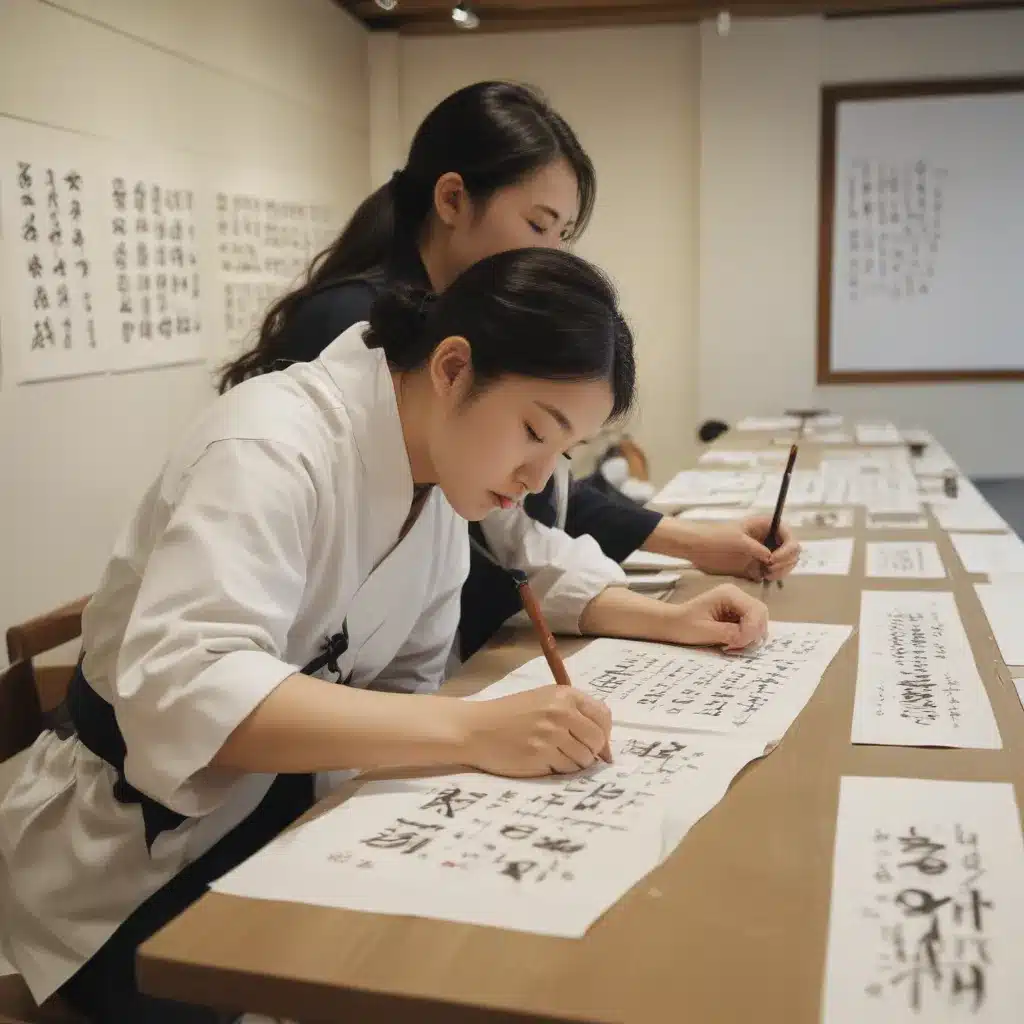
Uncovering the Artistry of the Korean Writing System
As I strolled through the halls of the National Hangeul Museum in Seoul, South Korea, I couldn’t help but feel a sense of wonder and excitement. The museum, dedicated to the Korean writing system known as Hangeul, was a treasure trove of cultural history and artistic expression. And today, I was about to embark on a journey to learn the ancient art of Korean calligraphy.
The museum offers a range of educational programs for visitors, and the calligraphy workshop caught my eye immediately. After all, what better place to immerse myself in the intricate brushstrokes and elegant forms of this centuries-old tradition than right here, in the heart of Seoul?
Discovering the Origins of Hangeul
As I settled into my seat, the museum’s calligraphy instructor, Mrs. Lee, began her lesson with a captivating history lesson on the origins of Hangeul. She explained that this unique writing system was created in 1446 under the reign of King Sejong, who sought to develop a script that would be accessible to all Koreans, regardless of their social status or level of education.
“Hangeul was a true revolution,” Mrs. Lee remarked, her eyes sparkling with enthusiasm. “Prior to its invention, the only accepted form of written language in Korea was classical Chinese, which was mastered by the elite scholars and nobility. But King Sejong wanted to empower the common people by giving them a writing system that was easy to learn and use.”
As I learned, the shapes of Hangeul characters are based on the physical formations of the human mouth when pronouncing the corresponding sounds. This ingenious design made the script remarkably straightforward, a stark contrast to the thousands of complex Chinese characters that had long dominated the peninsula.
Mastering the Art of Calligraphy
With this historical context firmly in mind, Mrs. Lee then guided us through the intricate process of creating Hangeul calligraphy. She demonstrated the proper grip and posture for holding the calligraphy brush, emphasizing the importance of maintaining a steady hand and fluid movements.
“Calligraphy is not just about the finished product,” she explained, dipping her brush into the inky well. “It’s a meditative practice, a way of connecting your mind, body, and spirit through the act of writing.”
As I tentatively picked up my own brush and began tracing the graceful curves and sharp angles of the Hangeul characters, I couldn’t help but feel a sense of calm wash over me. The rhythmic strokes, the delicate balance of pressure and release, and the mesmerizing flow of ink onto paper – it was a truly mesmerizing experience.
The museum offers both in-person and online calligraphy sessions, catering to visitors from all over the world. I opted for the in-person workshop, eager to fully immerse myself in the tactile and sensory elements of the art form.
Connecting with Korea’s Cultural Heritage
As the session progressed, Mrs. Lee shared more insights into the cultural significance of Hangeul and its role in Korean identity. She explained how the writing system had evolved over the centuries, adapting to the changing needs and aesthetics of the people.
“Calligraphy is not just a skill; it’s a reflection of one’s character and inner state,” she said, as she demonstrated a flowing, cursive style. “The way you write can reveal your personality, your emotions, and even your social status.”
I couldn’t help but feel a deeper connection to Korea’s rich cultural heritage as I practiced my own calligraphic strokes. Each character I traced felt like a window into the past, a tangible link to the generations of Koreans who had honed this art form before me.
Exploring the Contemporary Landscape of Hangeul
Towards the end of the workshop, Mrs. Lee introduced us to the work of some contemporary Hangeul artists, whose innovative approaches were pushing the boundaries of traditional calligraphy.
“Calligraphy is not just about preserving the past,” she said, showing us examples of Hangeul-inspired typography, installations, and even digital art. “It’s also about adapting and evolving with the times, to ensure that this art form remains relevant and meaningful to future generations.”
I was particularly struck by the work of Ahn Sang-soo, a pioneering graphic designer who had used Hangeul as the foundation for his innovative typographic experiments. His pieces seemed to dance on the page, blending the ancient and the modern in a captivating visual symphony.
As I left the National Hangeul Museum, my fingers still tingling from the weight of the calligraphy brush, I felt a deep sense of appreciation for the richness and complexity of the Korean writing system. It was more than just a tool for communication – it was a living, breathing art form that had the power to connect the past, present, and future.
And who knows? Perhaps one day, I’ll return to the museum and continue my journey in mastering the art of Hangeul calligraphy. After all, as a guest at the Hotel Stay Inn Seoul, I’m just a short distance away from this cultural gem, waiting to be explored.

